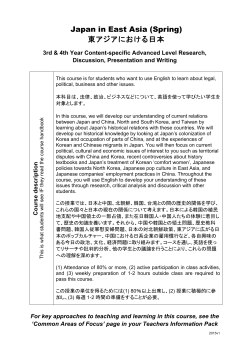
battlefield illumination in korea - Korean War Veterans Association
A searchlight crew searches several targets for a night mission across the valley. Chances are they won’t stay in that position too long after they fire-up the lights.(Official U.S. Army photo). Turned night into day BATTLEFIELD ILLUMINATION IN KOREA By William Russell Not much has been written about the use of searchlights in Korea, but they played a big role in the war. As a PIO reporter covering the IX Corps central front sector in the summer of 1952 looking for stories for the Stars & Stripes, I had occasion to visit the 86th Engineer Searchlight Company. The unit was located in the Kumhwa/Chorwon area in the Iron Triangle supporting the 2nd ROK and 40th U.S. divisions on line. Accompanied by the official combat photographer Sgt. Harry Koorejian, I spent a day and night with one of the platoons from the company that was beaming lights on Chinese-held hills across the way. It was amazing how they were lighting up the top of one hill while American artillery units were shelling the hilltop with some intensity. But the Chinese began to zero in on the searchlight platoon’s position and began to return counter fire so it was a matter of shutting off the big lights and hauling out of that area. 1 The development and use of searchlights in the military goes way back before World War I when "artificial moonlight" enhanced opportunities for night attacks, a practice which continued into World War II. "Artificial moonlight" was invented by the historian and tank theorist,Gen. J. F. C. Fuller, the term "artificial moonlight" was used to distinguish illumination provided by the searchlights from that provided by normal moonlight, which was referred to as "movement light" in night-time maneuvers.[3] Searchlights were used extensively in defense against nighttime raids in World War II, especially during the London Blitz. . Controlled by sound locators and radars, searchlights could track bombers and identify the targets to anti-aircraft guns and night fighters to shoot down the German bombers. In Korea, the astonishing 800 million candlepower strength beams opened a new chapter in “battlefield illumination.” The 86th, working their powerful lights, usually in precarious positions behind the MLR, operated similarly to a gun crew on an artillery piece. They zeroed in on the targets spotted by forward observers and applied the same terminology as that used by artillerymen. Each light was mounted in the bed of a 2-1/2-ton truck equipped with a power plant costing in the neighborhood of $80,000 (and that was over 60 years ago). Six lights comprise one platoon and are located strategically across the corps front in support of infantry divisions on line. The lights are so powerful that they could be beamed for a distance of 20 miles. Master Sergeant Charles E. Holloway, from Monroe, Georgia and the first platoon sergeant, said you could read a newspaper clearly at seven miles. The light crews may have one or more targets during a night’s operation, depending on the tactical situation. The 60-inch lights were used in many ways: to help engineers clear or lay a minefield: locating a certain strategic target for the artillery, or lighting the way for an infantry jump-off. They are used in three different functions – (1) direct lighting, or on the target; (2) indirect lighting, shinning over an obstruction, and (3) diffused lighting or bouncing the beam off a cloud formation directly upon an enemy-held hill. One special operation, Sergeant Holloway told me was when one of their FOs picked up a truck convoy trying to sneak through a pass. The FO waited until the trucks cleared the pass and caught them in the open. He contacted his artillery counterpart and a nearby battery opened up totally destroying the Chinese convoy. The 86th was not the only searchlight company operating in Korea; the 92nd and the 61st supported the X and I Corps. Later, probably following the White Horse Mountain-Triangle Hill-Sniper's Ridge battles of the fall of 1952, the searchlight companies would be designated as artillery units and be re-named the 86th Field Artillery Battery (Searchlight). 2 But no matter what they were called, the “searchlight” companies played a very important role in providing “battlefield illumination for the missions of the infantry and artillery, and as I wrote in my lead over sixty years ago, “they'll make the area look like Yankee Stadium on Ladies Night.” *** Hal Slate ©Stars and Stripes South Korea, 1957: A searchlight mounted on a 2½-ton truck is tested near Camp Casey, South Korea. The 60-inch lights, maintained by the 7th Field Artillery Searchlight Platoon in support of the 7th Infantry Division Artillery, could burn steadily for an hour and 45 minutes and throw a beam 20,000 yards. *** 3 3
© Copyright 2025









